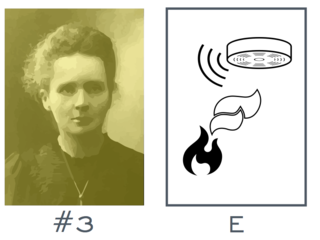Marie Curie

Common household smoke detectors contain a small amount of radioactive material, typically Americium 241 which ionises air molecules. These charged free particles give rise to a tiny current between two electrodes held at different electric potentials, and the current is detected by means of a supersensitive semiconductor transistor called a MOSFET. The presence of smoke reduces or disrupts the current of gas ions, which in turn triggers the alarm. The function of these lifesaving devices is thus enabled by the use of radioisotopes and our understanding of radioactivity.
Marie Skłodowska Curie’s groundbreaking work on radiation phenomena included discovering and isolating the radioactive elements of polonium and radium, besides establishing theoretical foundations of radioactivity. Her seminal work has been recognised through two Nobel Prizes, one in Physics and one in Chemistry. Not only was she the first woman to be awarded a Nobel Prize, but she remains the only female to have done so twice, and the only person to win in two different sciences.
Marie Curie was also pioneer of the field of Radiology for medical diagnosis and treatment, for example x-ray and cancer radiation therapy. Radioisotopes have found many other applications, ranging from carbon dating to inspection and monitoring of manufacturing processes, food preservation, and nuclear power.
Want to learn more?
All our physics degree programmes teach radioactive decay and nuclear reactions (4th year course B20SN2 Statistical, Nuclear and Particle Physics).